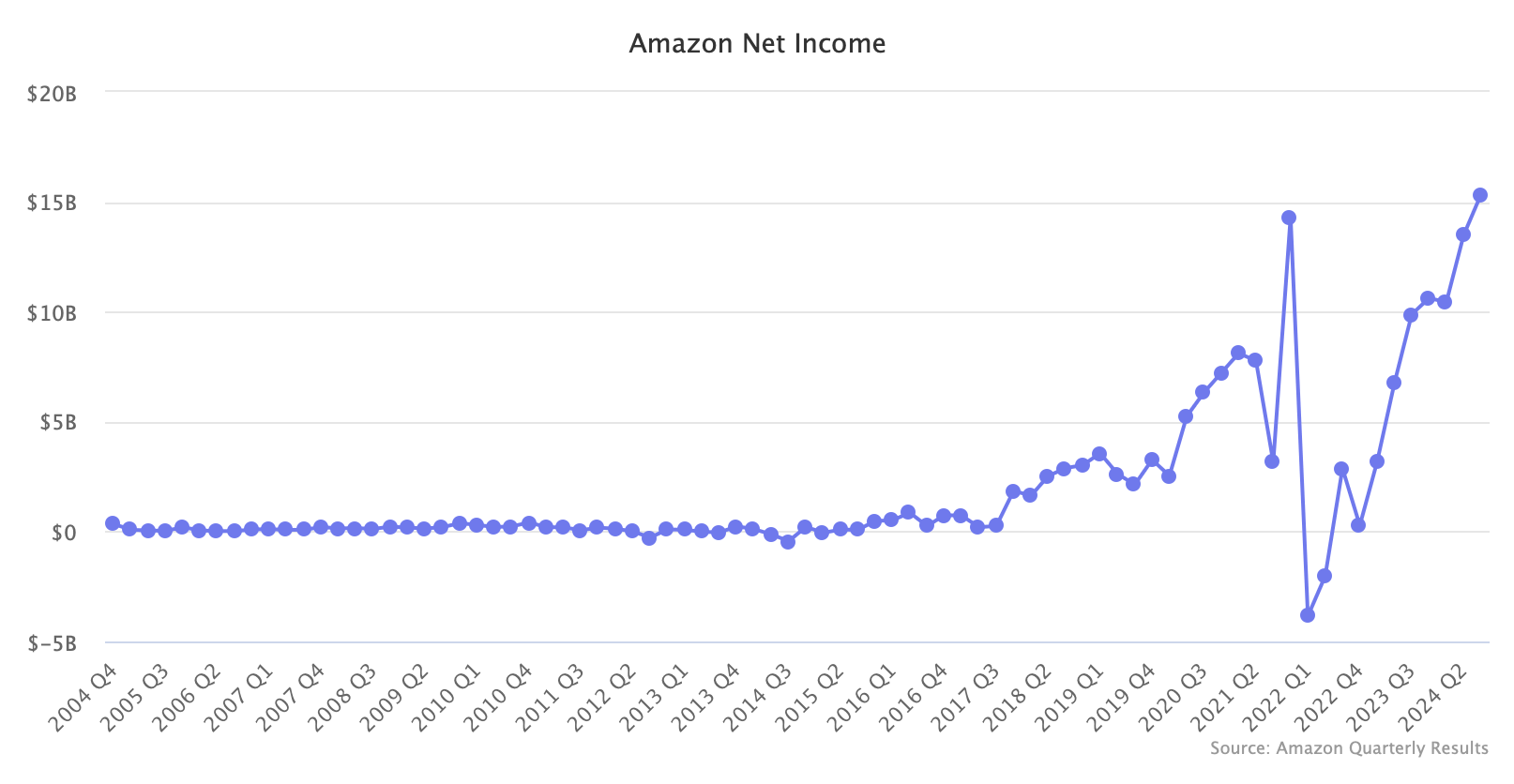Amazon is producing record profits while investing more than ever before. It reported $22.6 billion in capital expenditures in the third quarter — a new high. It also reported $15.3 billion in net income, a new high, too.
“This is the Amazon everyone should have feared — both investing aggressively in its future while also pumping out real profits,” wrote Jason Del Rey at Fortune earlier this year. Years ago, Jeff Bezos, then CEO, described Amazon as “famously unprofitable.” It is staggering how untrue that is today. Yet, not only is Amazon profitable, but it is also investing in further long-term bets at a record pace.
For decades, Amazon had a “pendulum shift sometimes between profitability and investment,” said Brian Olsavsky, CFO of Amazon, when discussing 2024 Q1 results. It used to do one at a time, rarely flipping to profitability mode. That changed over the past few quarters — Amazon is “at the stage now where we’re doing both at the same time continually.”

Most of the $22.6 billion investment was spent on AWS expansion, but some went to fulfillment warehouses. The AI boom drove that, and Amazon said it will continue to invest even more. On the flip side, its retail profitability increased due to margin expansion driven by spending less to ship each item — reduction in its “cost to serve,” as Amazon likes to call it. As a result, for the past few quarters, Amazon’s unit sales have grown faster than fulfillment costs — a direct consequence of fulfillment network regionalization in the U.S.
While spending less to deliver each order, Amazon also made it faster. “We continue to roll out same-day delivery facilities, which is not only the fastest way to get products to customers but also one of our lowest cost ways to deliver. Over 40 million customers this past quarter have had their orders delivered for free with same-day delivery, an increase of more than 25% year-over-year,” said Andrew Jassy, CEO of Amazon. Amazon’s same-day and next-day delivery is widening the gap between it and the rest of e-commerce.
Amazon is retail plus AWS, its cloud hosting business. Inside retail, there are also the marketplace, fulfillment, advertising, and subscriptions (Prime). AWS is not part of the same flywheel, but Amazon benefits from all businesses on the same balance sheet, shifting growth and profitability across units to ultimately benefit the whole. However, AWS is no longer the only reason the company is profitable — AWS accounts for 60% of operating income. (Many have called for Amazon to be forced to split off AWS)
This is the Amazon everyone should have feared because it has AWS in its back pocket and a retail business that is getting faster at delivering items while also improving margins.

